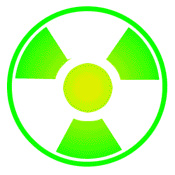During the ’70’s and ’80’s, a toxic commerce in nuclear fuel was conducted between Britain, France, and Japan. Nuclear fuel rods would be shipped from Cape de la Hague and Windscale to Japan on the specially-built radioactive cargo ships Pacific Fisher and Pacific Swan, and the “spent” fuel rods from Japan would be shipped back again. Throughout the ’70’s, these ships would stop in the USA (Honolulu) to take advantage of cheaper US fuel prices. However, each of these ships was a potential disaster equivalent to multiple Chernobyls. As targets for terrorism they were horrendous; and even common accidents such as shipboard fires, or sinking, would produce intolerable consequences. There is not enough water in the world to dilute the radioisotopes of such a loaded ship to “safe” levels, and merely a plume of contaminated smoke would have made Oahu uninhabitable.
1n 1980 Greenpeace Foundation led the campaign to educate the public about the myths of “reprocessing”, the dangers of a plutonium-economy energy cycle, and the lack of any sort of contingency plans in case of accident. The result was a groundswell of cooperation between the dockside labor unions, the “peace” movement, and the public at large which caused the Governor of Hawaii to turn away these ships permanently and set a global precedent.
In the years since, the true costs and dangers of “spent fuel reprocessing” have become better known, and this dangerous commerce has lost most of its customers. In an era of global terrorism, it’s good sense to keep quantities of purified plutonium to a minimum, since it may be used to easily create a simple “hiroshima” type bomb or used in a simple incendiary device to make huge areas downwind permanently uninhabitable.
Greenpeace Foundation is not “anti-nuclear” in the sense of being irrationally against anything that radiates. However, we advocate looking at the true benefits, costs and risks of any technology. If you include the cost of the subsidies to uranium mining made available by the cold war arm’s race, fission reactors other than breeder types produced little if any net energy, while producing long-lived wastes we have yet to pay to dispose of. Breeder reactors, as noted, create plutonium, a horrendously toxic product coveted by terrorists as an ultimate weapon of mass destruction.
It’s hard to beat fusion power in the form of sunlight – now THERE is a good reactor design. Geothermal energy is a safe way to harness the heat energy of fissioning radioisotopes safely kept away from the biosphere in the earth’s core. This is nuclear energy – the clean and “natural” way.
The USA’s oldest and original Greenpeace, proudly unaffiliated with Greenpeace USA

